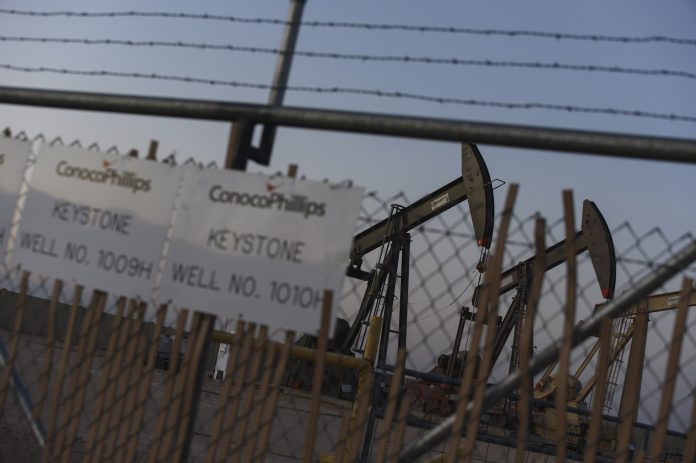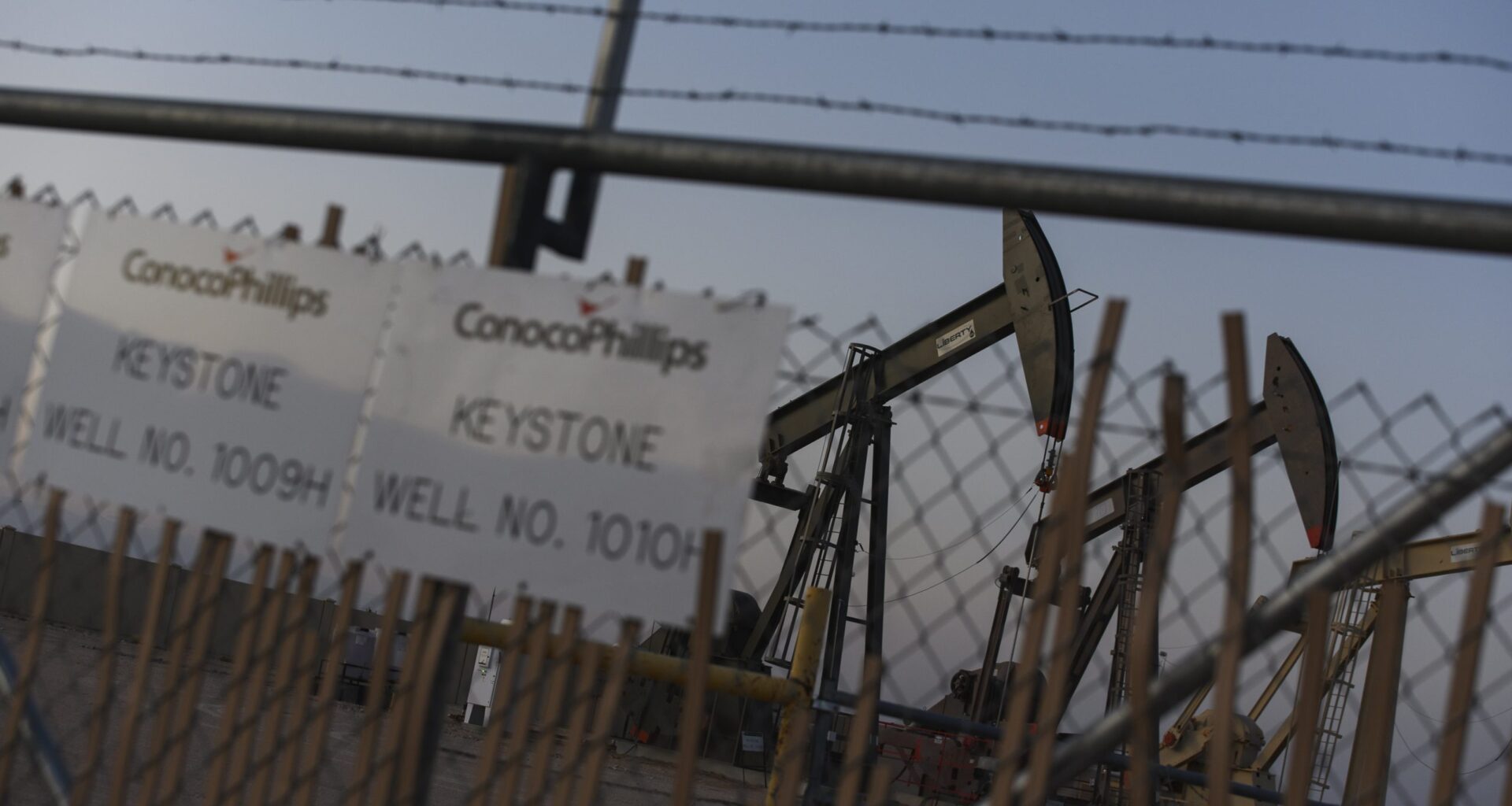 An array of pumpjacks operate Thursday, July 7, 2022 in Odessa, Texas. (Odessa American/Eli Hartman)
An array of pumpjacks operate Thursday, July 7, 2022 in Odessa, Texas. (Odessa American/Eli Hartman)Like most of the other major oil companies, ConocoPhillips is undismayed by the recent oil price drop related to President Trump’s tariffs and it is enhancing capital efficiency and cutting costs with a $5-billion reduction in capital spending and a $200-million lowering of its operating costs.
In his company’s first quarter earnings call report, Chairman-CEO Ryan Lance said the current environment is clearly marked by uncertainty and volatility.
“Outlooks for global economic growth and oil demand have been revised lower and on the supply side OPEC-Plus is unwinding voluntary cuts quicker than expected,” Lance said. “As a result oil prices have softened relative to the first quarter.
“However, the ultimate depth and duration of this current price environment remains unclear. As I’ve said in the past ConocoPhillips is built for this with clear competitive advantages. We have a deep, durable and diverse portfolio.
“We have decades of inventory below our $40 per barrel West Texas Intermediate Crude cost of supply threshold both in the U.S. and internationally and our advantaged U.S. inventory position in particular should become increasingly evident as the market sorts through the inventory haves and have-nots in the current environment.
“We believe we are the clear leader of the haves and we have a disciplined capital allocation framework that is battle-tested through the cycles.”
Lance said his company’s acquisition and integration of Marathon Oil is progressing ahead of schedule and its production guidance is unchanged.
“We are delivering the same volume for less capital and reduced operating costs and we will keep working to further advance this plan as the year progresses,” he said. “We’ve been here before and we know how to manage through a more challenging environment.
“With respect to return of capital we distributed $2.5 billion to shareholders in the first quarter. We believe our shares represent a very attractive investment at these prices and we will continue returning a significant portion of our cash flow to our shareholders.”
Lance said ConocoPhillips is on the cusp of a compelling multi-year free cash flow growth trajectory led by its high quality, longer cycle investments in Alaska, where it is developing the federal government-sanctioned Willow Project in the National Petroleum Reserve, and in liquefied natural gas.
“This underlying improvement in our free cash flow will structurally lower our break-even and increase our capacity to return capital to shareholders,” he said.
Executive Vice President-Chief Financial Officer Bill Bullock, who is retiring after 39 years and is being succeeded by Andy O’Brien, said the company started 2025 with strong execution including overall production of 2,389,000 barrels of oil equivalent per day and 1,462,000 daily BOE in the Lower 48 States.
As usual, Bullock said, the Permian Basin led with 816,000 while there were 379,000 in the Eagle Ford Shale in South Texas and 212,000 in the Bakken Shale in North Dakota and Montana.
“Regarding first quarter financials we generated $2.9 per share in adjusted earnings,” he said. “Operating working capital was a $650-million tailwind in the quarter, benefiting from the previously guided one-time cash tax benefit associated with the Marathon acquisition.
“Capital expenditures were $3.4 billion and our returns to shareholders included $1.5 billion in buybacks and $1 billion in ordinary dividends.”
Bullock reported ending the quarter with cash and short-term investments of $7.5 billion plus $1 billion in long-term liquid investments.
“Full year production guidance remains unchanged,” he said. “We still expect to deliver low single-digit production growth at this lower level of capital spending.”
Bullock said second quarter production is expected to be in a range of 2.34 to 2.38 million BOE per day including approximately 40,000 barrels per day of planned turnarounds.
“We expect the second quarter to be our peak turnaround activity for the year,” he said. “Then third quarter turnarounds should be around 25,000 barrels per day, primarily in Alaska.
“For capital we now expect to spend between $12.3 and $12.6 billion for the full year or about a half-billion lower than our prior guidance of approximately $12.9 billion,” Bullock said. “This is the result of continued capital efficiency improvements and plan optimization.
“Second quarter capital should be similar to the first quarter and then decline materially over the back half of the year.”
Related
